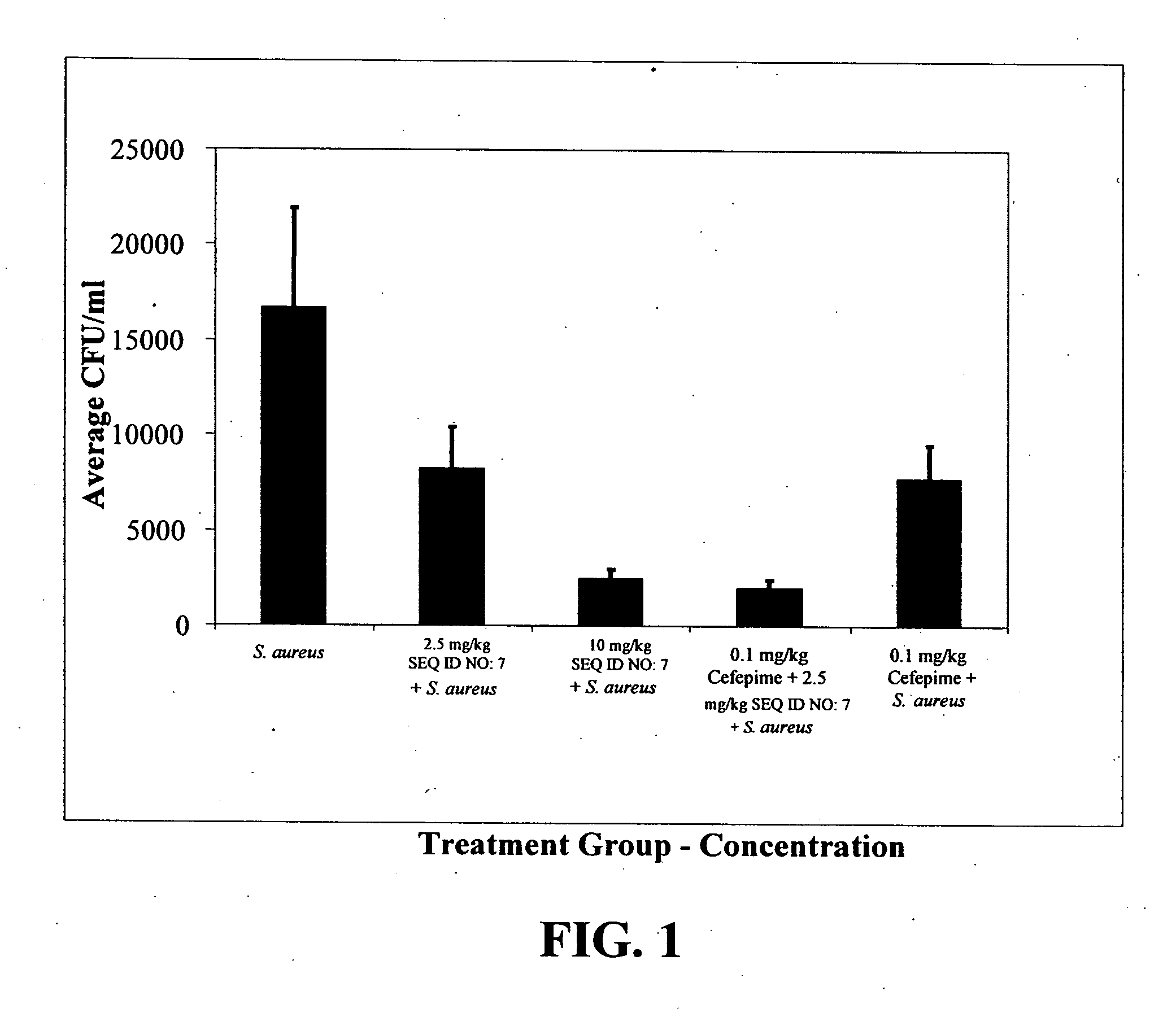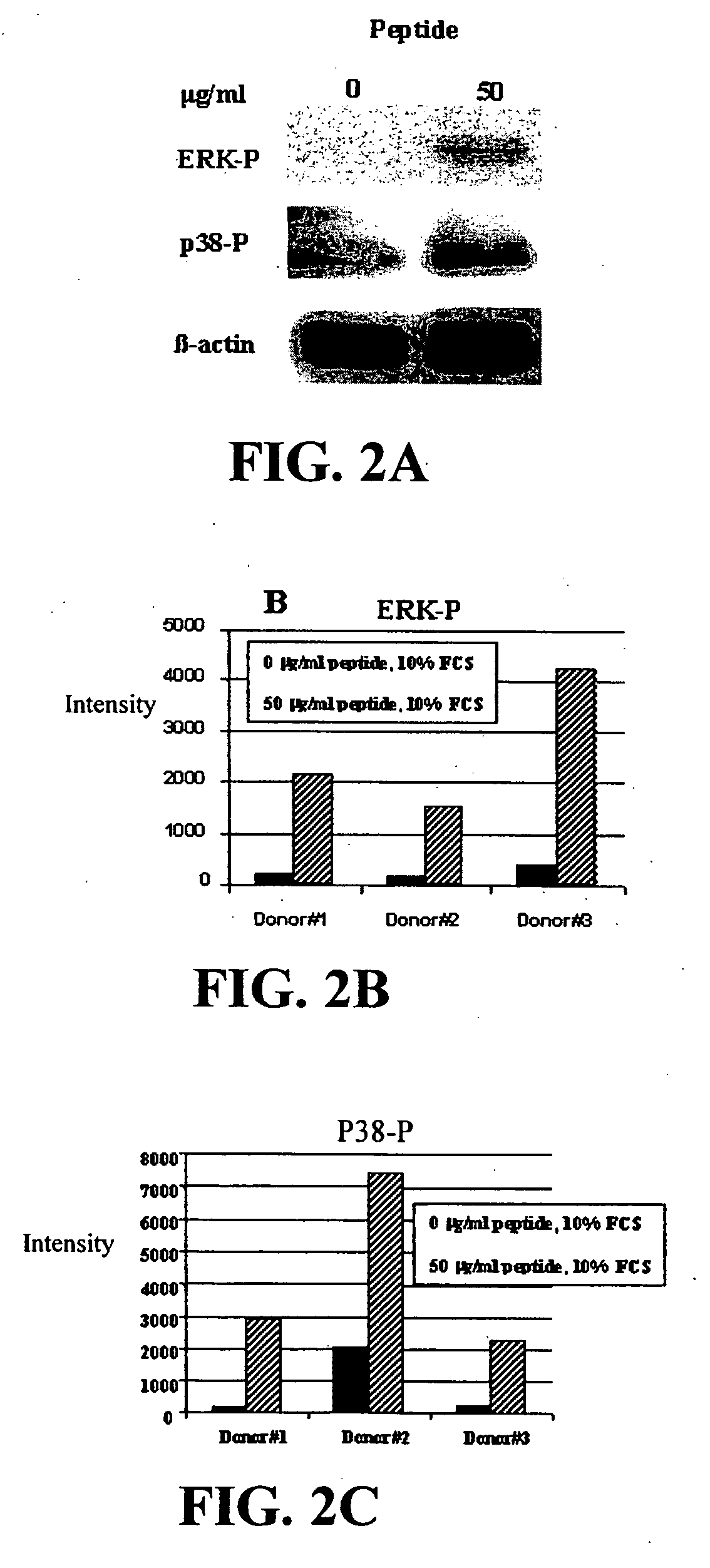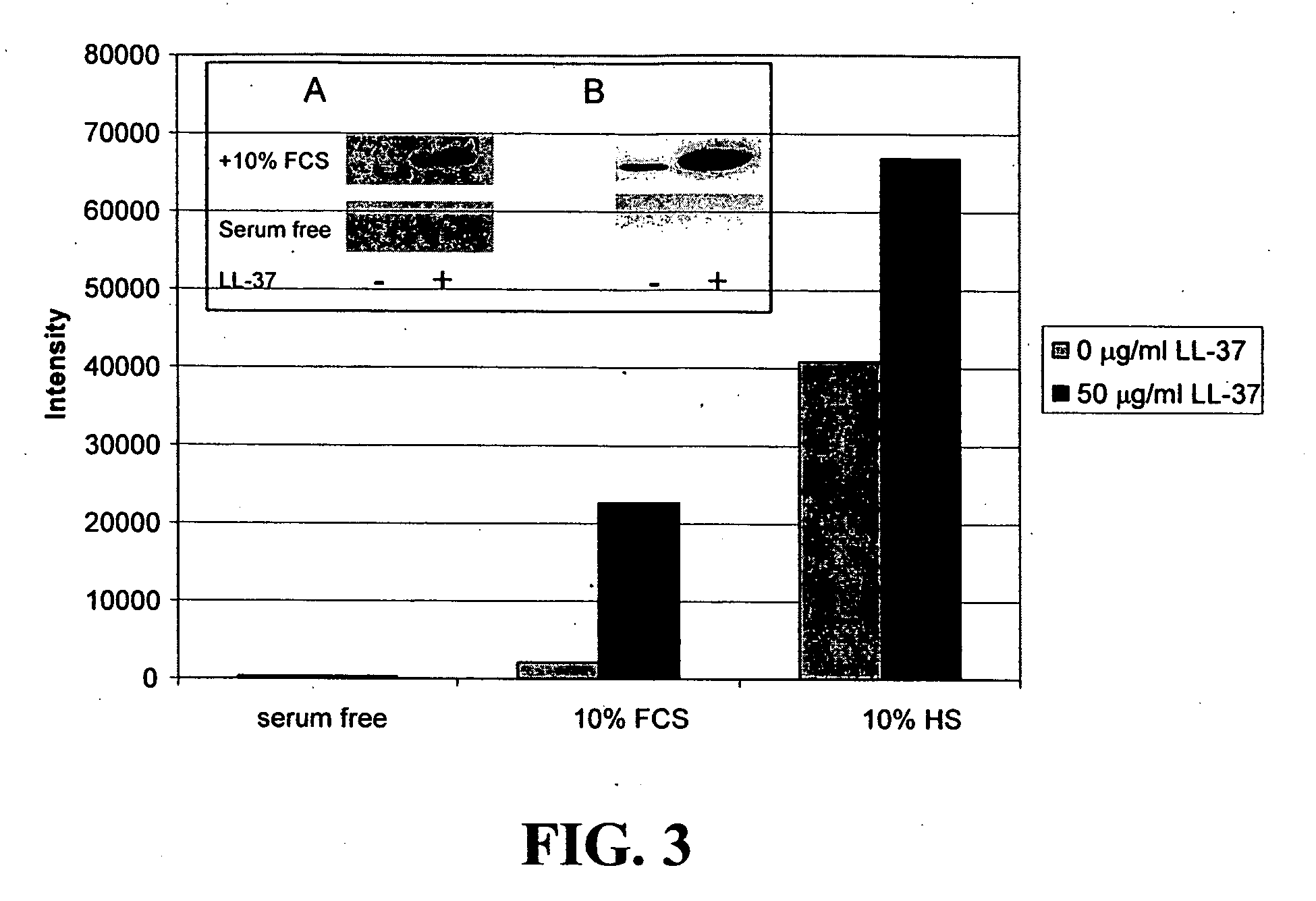Effectors of innate immunity
a technology of innate immunity and effectors, applied in the field of peptides, can solve the problems of inability to treat antibiotic-resistant strains, inability to perform complex surgery, chemotherapy or most medical interventions such as catheterization, and new antibiotic-resistant strains, so as to block/dampen inflammatory and/or septic responses, and reduce sepsis and/or inflammation.
- Summary
- Abstract
- Description
- Claims
- Application Information
AI Technical Summary
Benefits of technology
Problems solved by technology
Method used
Image
Examples
example 1
Anti-Sepsis / Anti-Inflammatory Activity
[0123] Polynucleotide arrays were utilized to determine the effect of cationic peptides on the transcriptional response of epithelial cells. The A549 human epithelial cell line was maintained in DMEM (Gibco) supplemented with 10% fetal bovine serum (FBS, Medicorp). The A549 cells were plated in 100 mm tissue culture dishes at 2.5×106 cells / dish, cultured overnight and then incubated with 100 ng / ml E.coli O111:B4 LPS (Sigma), without (control) or with 50 μg / ml peptide or medium alone for 4 h. After stimulation, the cells were washed once with diethyl pyrocarbonate-treated phosphate buffered saline (PBS), and detached from the dish using a cell scraper. Total RNA was isolated using RNAqueous (Ambion, Austin, Tex.). The RNA pellet was resuspended in RNase-free water containing Superase-In (RNase inhibitor; Ambion). DNA contamination was removed with DNA-free kit, Ambion). The quality of the RNA was assessed by gel electrophoresis on a 1% agarose g...
example 2
Neutralization of the Stimulation of Immune Cells
[0127] The ability of compounds to neutralize the stimulation of immune cells by both Gram-negative and Gram-positive bacterial products was tested. Bacterial products stimulate cells of the immune system to produce inflammatory cytokines and when unchecked this can lead to sepsis. Initial experiments utilized the murine macrophage cell line RAW 264.7, which was obtained from the American Type Culture Collection, (Manassas, Va.), the human epithelial cell line, A549, and primary macrophages derived from the bone marrow of BALB / c mice (Charles River Laboratories, Wilmington, Mass.). The cells from mouse bone marrow were cultured in 150-mm plates in Dulbecco's modified Eagle medium (DMEM; Life Technologies, Burlington, ON) supplemented with 20% FBS (Sigma Chemical Co, St. Louis, Mo.) and 20% L cell-conditioned medium as a source of M-CSF. Once macrophages were 60-80% confluent, they were deprived of L cell-conditioned medium for 14-16 ...
example 3
Assessment of Toxicity of the Cationic Peptides
[0145] The potential toxicity of the peptides was measured in two ways. First, the Cytotoxicity Detection Kit (Roche) (Lactate dehydrogenase-LDH) Assay was used. It is a colorimetric assay for the quantification of cell death and cell lysis, based on the measurement of LDH activity released from the cytosol of damaged cells into the supernatant. LDH is a stable cytoplasmic enzyme present in all cells and it is released into the cell culture supernatant upon damage of the plasma membrane. An increase in the amount of dead or plasma membrane-damaged cells results in an increase of the LDH enzyme activity in the culture supernatant as measured with an ELISA plate reader, OD490 nm (the amount of color formed in the assay is proportional to the number of lysed cells). In this assay, human bronchial epithelial cells (I6HBEo14, HBE) cells were incubated with 100 μg of peptide for 24 hours, the supernatant removed and tested for LDH. The other...
PUM
| Property | Measurement | Unit |
|---|---|---|
| concentrations | aaaaa | aaaaa |
| concentrations | aaaaa | aaaaa |
| concentrations | aaaaa | aaaaa |
Abstract
Description
Claims
Application Information
 Login to View More
Login to View More - R&D
- Intellectual Property
- Life Sciences
- Materials
- Tech Scout
- Unparalleled Data Quality
- Higher Quality Content
- 60% Fewer Hallucinations
Browse by: Latest US Patents, China's latest patents, Technical Efficacy Thesaurus, Application Domain, Technology Topic, Popular Technical Reports.
© 2025 PatSnap. All rights reserved.Legal|Privacy policy|Modern Slavery Act Transparency Statement|Sitemap|About US| Contact US: help@patsnap.com



